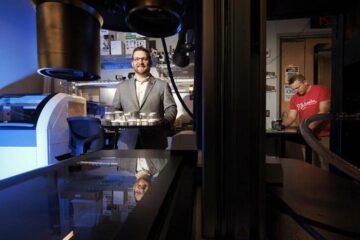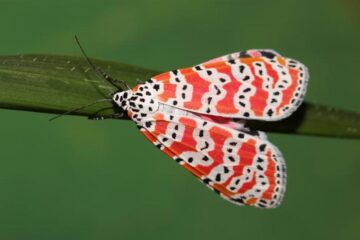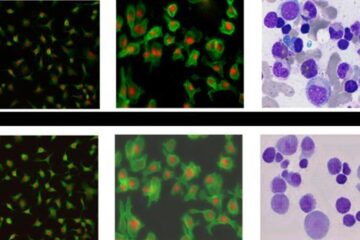Finger (mal)formation reveals surprise function of desert DNA

Scientists from the EPFL and the University of Geneva have discovered a genetic mechanism that defines the shape of our members in which, surprisingly, genes play only a secondary role. The research published in Cell, online the 23rd of November, shows the mechanism is found in a DNA sequence that was thought, incorrectly, to play no role.
This long string has seven enhancers which, when combined with one another, modulate the activity of the genes responsible for the formation of the fingers – an important fundamental discovery for the field of genetics. The discovery could notably help better understand anomalies that are transmitted from generation to generation such as welded fingers or extra or abnormally short fingers (Kantaputra syndrome) even if the genes appear perfectly normal.
Turbos on the genome
DNA is composed of only about 2% genes. But it has other types of sequences, such as enhancers that increase the activity of certain genes at key moments. “The discovery we have made is that the group of genes involved in finger growth is modulated by seven enhancers, not just one, and they combine through contact,” says Thomas Montavon, lead author of the article and researcher at the EPFL.
When the fingers in the embryo begin to take shape, the string of DNA folds and the enhancers, located on different parts of the string, come into contact. They then bring together various proteins that stimulate the activity of the genes, and the fingers start to grow. If one of these seven enhancers is missing, the fingers will be shorter, or abnormally shaped. When two are missing, the defects are even more pronounced. Without enhancers, the genes work slowly, and generate only the beginnings of fingers.
How does the DNA fold in exactly the right way so that the enhancers will correctly do their job? The recently discovered process remains largely unexplained. “In other tissues, such as the brain, the string of DNA folds differently,” says Denis Duboule, director of the study and researcher at both the EPFL and the University of Geneva. “To our knowledge, it is only in the fingers that it adopts this shape.”
An explanation for evolutionary diversity
Statistically, the seven enhancers involved in finger growth create seven opportunities for a mutation to occur. The flexibility of this mechanism, with no known equivalent to date, causes not only hereditary malformations, but also the many variations in the hands, legs and other appendages in nature. “Just think of some ungulates, which walk on a single finger, or the ostrich, which has only two, and the human hand, of course” explains Denis Duboule.
Other genetic processes may also function on the basis of a similar principle. This could explain the diversity of the products of evolution, in areas other than the fingers, according to Denis Duboule. “When a mutation occurs on a gene, for instance in cystic fibrosis, it is often binary. This amounts to an 'all or nothing' situation. With the mechanism we have discovered, it is a 'more or less' situation. It is combined, it is modulated.”
This research is carried out within the National Center of Competence in Research (NCCR) Frontiers in Genetics. The NCCRs are an initiative of the Swiss government to stimulate research and education in key areas. http://www.frontiers-in-genetics.org
Vidéo (interview with Denis Duboule) : http://www.youtube.com/watch?v=jrFG34HPqN8
Contacts:
Denis Duboule denis.duboule@epfl.ch or 41-21-693-83-38
Thomas Montavon thomas.montavon@epfl.ch or 41-21-693-06-05
Lionel Pousaz, EPFL Media & Communications, lionel.pousaz@epfl.ch
or 41-79-559-71-61
Media Contact
More Information:
http://www.epfl.chAll latest news from the category: Life Sciences and Chemistry
Articles and reports from the Life Sciences and chemistry area deal with applied and basic research into modern biology, chemistry and human medicine.
Valuable information can be found on a range of life sciences fields including bacteriology, biochemistry, bionics, bioinformatics, biophysics, biotechnology, genetics, geobotany, human biology, marine biology, microbiology, molecular biology, cellular biology, zoology, bioinorganic chemistry, microchemistry and environmental chemistry.
Newest articles

Bringing bio-inspired robots to life
Nebraska researcher Eric Markvicka gets NSF CAREER Award to pursue manufacture of novel materials for soft robotics and stretchable electronics. Engineers are increasingly eager to develop robots that mimic the…

Bella moths use poison to attract mates
Scientists are closer to finding out how. Pyrrolizidine alkaloids are as bitter and toxic as they are hard to pronounce. They’re produced by several different types of plants and are…

AI tool creates ‘synthetic’ images of cells
…for enhanced microscopy analysis. Observing individual cells through microscopes can reveal a range of important cell biological phenomena that frequently play a role in human diseases, but the process of…





















